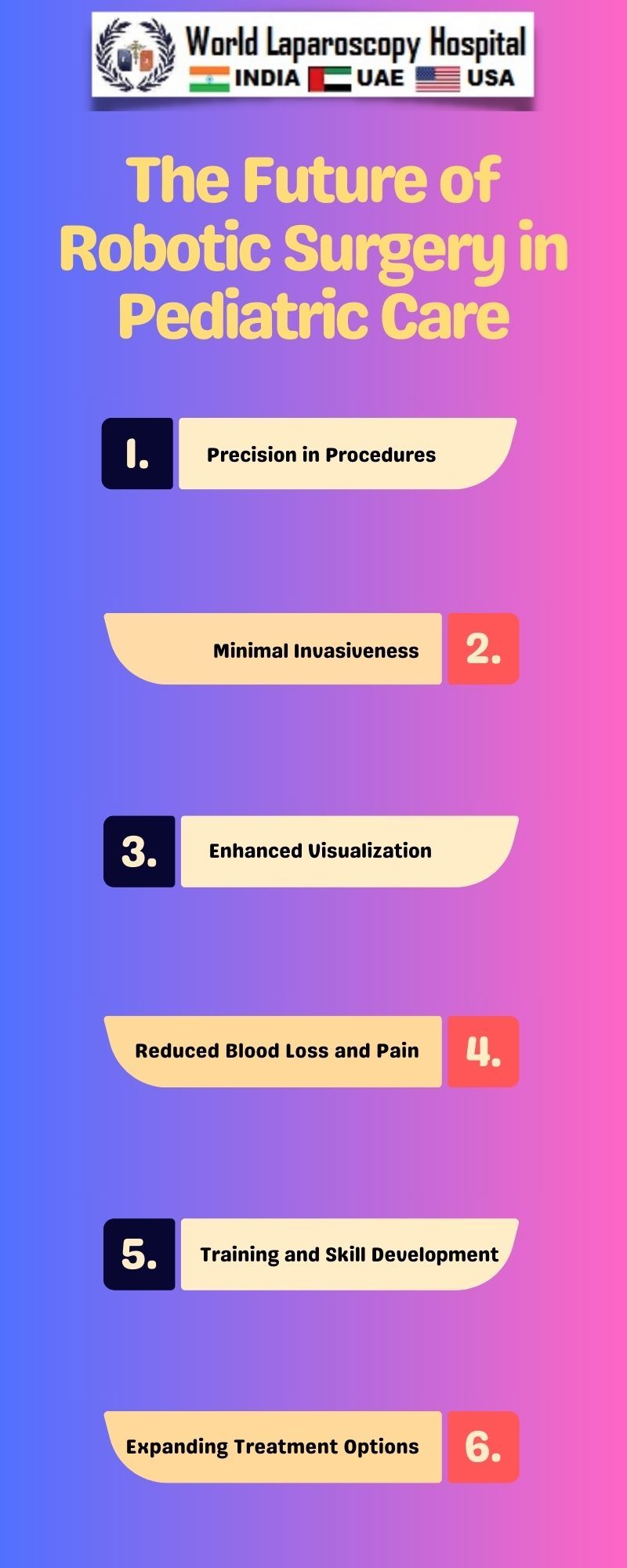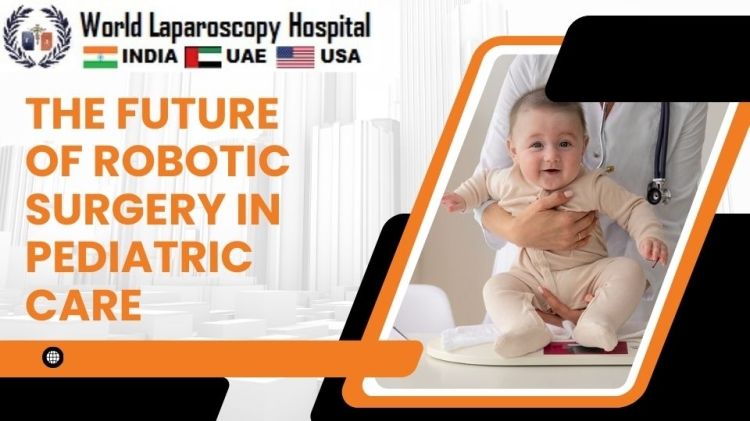The Future of Robotic Surgery in Pediatric Care
Introduction:
The landscape of pediatric care is undergoing a paradigm shift with the advent of cutting-edge robotic surgery technologies. As we stand at the intersection of medicine and robotics, the future of pediatric surgery is imbued with the promise of precision, efficiency, and enhanced outcomes for our youngest patients. In this comprehensive exploration, we delve into the current state of robotic surgery in pediatric care, the transformative potential it holds, challenges to be addressed, and the ethical considerations that accompany this technological evolution.

Traditional pediatric surgery, though highly skilled, often involves invasive procedures that can result in longer recovery times, increased pain, and potential complications. The limitations of conventional methods have spurred the development of robotic surgery in the pediatric domain. The present scenario witnesses the use of robotic systems such as the da Vinci Surgical System, designed to augment a surgeon's capabilities with enhanced precision and control.
The Technological Marvel of Robotic Surgery:Robotic surgery in pediatrics harnesses the power of advanced technologies, including robotic arms controlled by a console, high-definition imaging, and miniature instruments. These components synergize to provide surgeons with a three-dimensional view of the surgical site, along with greater dexterity and maneuverability. This technological prowess facilitates minimally invasive procedures, reducing trauma to surrounding tissues and expediting recovery.
Minimally Invasive Procedures and Pediatric Patients:One of the primary advantages of robotic surgery in pediatric care lies in its ability to perform minimally invasive procedures. Traditional surgeries often require larger incisions, causing more significant trauma to young patients. Robotic systems, with their smaller incisions and precise movements, minimize tissue damage, leading to reduced pain, shorter hospital stays, and quicker recovery. This holds immense potential for improving the overall experience of pediatric surgery for both patients and their families.
Enhanced Precision in Delicate Procedures:Pediatric surgery often involves delicate and intricate procedures, such as repairing congenital anomalies or removing tumors. The precision offered by robotic systems allows surgeons to navigate these complexities with unprecedented accuracy. The three-dimensional visualization and articulating instruments empower surgeons to perform intricate tasks with finesse, enhancing the success rates of surgeries and reducing the risk of complications.
Expanding the Surgical Horizon:Robotic surgery opens new frontiers in pediatric care by enabling procedures that were previously deemed too challenging or risky. Complex surgeries involving small structures or intricate maneuvers become more feasible, broadening the scope of what can be achieved in pediatric surgery. This expansion of possibilities holds promise for addressing a wider range of medical conditions and providing innovative solutions to complex cases.
Challenges and Considerations:While the future of robotic surgery in pediatric care is promising, it is essential to address challenges and ethical considerations. The high costs associated with robotic systems, the need for specialized training, and concerns about long-term effects on young patients are among the challenges that need careful consideration. Balancing the benefits with the associated risks is crucial to ensuring the responsible integration of robotic surgery into pediatric healthcare.
Training and Skill Development:As robotic surgery becomes more prevalent in pediatric care, training programs for healthcare professionals must evolve to incorporate the specialized skills required for operating these systems. Surgeons need to undergo rigorous training to master the intricacies of robotic-assisted procedures, ensuring safe and effective implementation in pediatric surgeries. Continuous education and skill development are integral to optimizing the benefits of this technology.
Ethical Considerations in Pediatric Robotic Surgery:The ethical dimensions of robotic surgery in pediatric care necessitate careful examination. Questions surrounding informed consent, the long-term impact on young patients, and the ethical implications of pushing technological boundaries in pediatric medicine require thoughtful deliberation. Ethical guidelines must be established and continually updated to ensure the responsible and humane use of robotic technologies in the pediatric surgical domain.
Patient-Centric Approach:The integration of robotic surgery into pediatric care should always prioritize a patient-centric approach. The goal is not only to enhance surgical outcomes but also to improve the overall experience for young patients and their families. Ensuring that the benefits of robotic surgery translate into improved quality of life for pediatric patients is paramount in shaping the future trajectory of this transformative technology.
The Road Ahead: A Collaborative Future:The future of robotic surgery in pediatric care is a collaborative endeavor that involves clinicians, engineers, ethicists, and policymakers. Continued research and development, alongside an emphasis on interdisciplinary collaboration, will propel the field forward. Creating a symbiotic relationship between technology and healthcare expertise will be pivotal in realizing the full potential of robotic surgery for the benefit of pediatric patients worldwide.
Conclusion:
As we stand on the cusp of a new era in pediatric surgery, the future holds immense promise with the integration of robotic technologies. The precision, efficiency, and minimally invasive nature of robotic surgery are revolutionizing the landscape of pediatric care. However, careful navigation of challenges and ethical considerations is imperative to ensure that this technological evolution remains aligned with the core principles of patient well-being and responsible medical practice. The journey ahead involves not just technological advancements but a harmonious collaboration between the brilliance of robotics and the compassion of pediatric healthcare.


